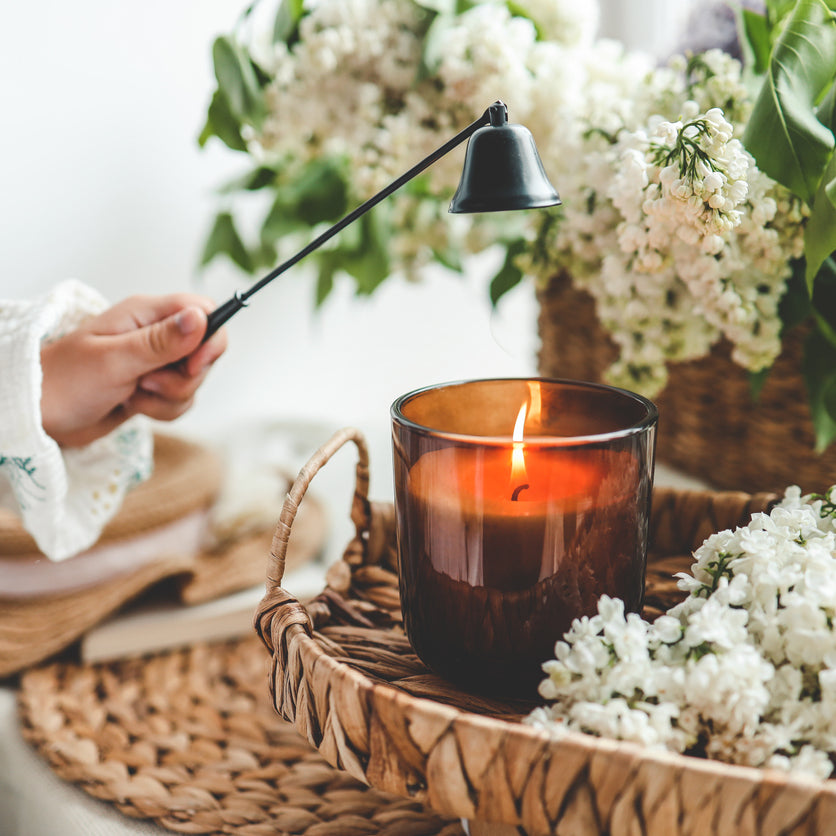Scented candles are more than just a source of light—they create ambiance, add warmth, and fill your space with beautiful fragrances that can enhance your mood. But not all scented candles are created equal. Whether you’re new to candle shopping or a seasoned enthusiast, here are some essential tips to guide you in selecting the best candles and what to avoid.

Always opt for candles made from natural waxes like soy wax, beeswax, or coconut wax. These are not only eco-friendly, but they also burn longer and cleaner than paraffin wax, which can release harmful chemicals into the air. 100% soy wax candles are a great choice because they are renewable, biodegradable, and burn without producing soot.
2. High-Quality Fragrance Oils
The scent is the star of a scented candle, so it’s essential to look for candles made with phthalate-free, non-toxic fragrance oils. This ensures you’re not breathing in any harmful chemicals when the candle is burning. Look for brands that emphasize the safety and quality of their fragrances, especially those that custom formulate them for a unique and pure scent experience.
3. Proper Wick Material
The wick can make or break a candle’s performance. Look for cotton or wooden wicks that are lead-free. Cotton wicks provide a steady flame, while wooden wicks offer a gentle crackling sound for a more rustic and cozy vibe. Both options provide a clean burn without releasing harmful substances into the air.
4. Burn Time
Longer burn times mean you’ll get the most value out of your candle. Check the label for an estimated burn time—typically, natural waxes like soy and beeswax last longer. A good-quality candle should burn evenly all the way down without tunneling (when the wax burns down the middle but not the sides).
5. Sustainable Packaging
If you’re environmentally conscious, consider brands that offer sustainable or reusable packaging. Glass jars can be repurposed, and recyclable packaging reduces your environmental footprint. It’s a small but impactful way to support eco-friendly practices.
1. Paraffin Wax
Paraffin wax is a byproduct of petroleum, and while it’s often cheaper, it can release toxins such as toluene and benzene into the air when burned. These chemicals can lead to respiratory issues and are especially harmful if you frequently burn candles indoors. Avoid paraffin if you’re looking for a cleaner, healthier home environment.
2. Synthetic Fragrances with Phthalates
Many synthetic fragrances contain phthalates, which are linked to hormone disruption and other health concerns. Candles made with these synthetic fragrances may smell great but can contribute to poor indoor air quality. Always check for “phthalate-free” labels or inquire with the manufacturer about the type of fragrance oils they use.
3. Wicks Containing Lead or Zinc
Avoid candles with metal-core wicks, particularly those that contain lead or zinc. While most reputable candle makers have moved away from lead wicks, they can still be found in some cheaper or imported products. Lead wicks release harmful particles into the air that can be toxic, particularly for children and pets.
4. Candles with Overpowering or Harsh Scents
While everyone’s scent preference is different, be cautious of candles that have very strong or artificial-smelling fragrances. Overly intense scents may indicate the use of lower-quality, synthetic oils. These can lead to headaches, nausea, or irritation. Instead, opt for natural, well-balanced fragrances that create a subtle, pleasant atmosphere without overwhelming your senses.
5. Unclear Ingredients or Labels
If a candle’s packaging doesn’t clearly state what materials and ingredients are used, proceed with caution. Transparent labeling is a sign that the manufacturer is proud of their product and has nothing to hide. If you can’t find information on the wax type, fragrance oils, or wick materials, it’s best to pass.
What Not to Do:
1. Don’t Skip Trimming the Wick
Always trim the wick to about ¼ inch before each burn. This helps ensure a cleaner, more even burn and prevents excessive soot from forming on the candle’s container. It also extends the life of your candle.
2. Don’t Burn a Candle for Too Long
Avoid burning your candle for more than 4 hours at a time. Prolonged burning can cause the wick to “mushroom,” leading to soot production and uneven burning. It’s also a fire hazard if left unattended.
3. Don’t Forget to Test in Small Spaces
If you’re sensitive to fragrances, it’s a good idea to test a new candle in a smaller space like a bathroom or office. This allows you to gauge how the scent will affect you before lighting it in larger, more populated areas.
Final Thoughts:
When choosing a scented candle, it’s important to invest in quality ingredients and ethical production methods. Look for natural waxes, non-toxic fragrances, and sustainable practices. Stay away from synthetic chemicals, harmful wicks, and misleading labels. A good candle not only smells amazing but also burns cleanly and safely, enhancing your home’s environment without sacrificing your health.
At Ricandela Co., we take pride in crafting candles that meet all these criteria. Our hand-poured, 100% soy wax candles are made with custom-formulated, phthalate-free fragrances 100% cotton lead free wick, ensuring a clean, luxurious burn every time. Happy candle shopping!




